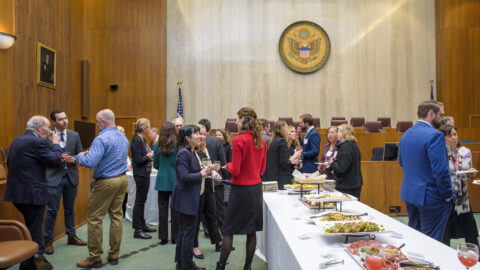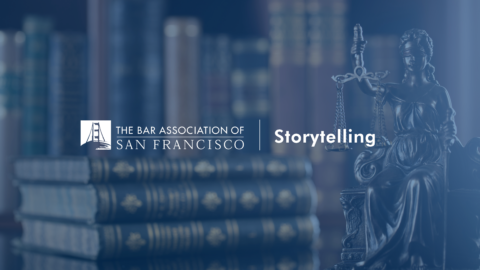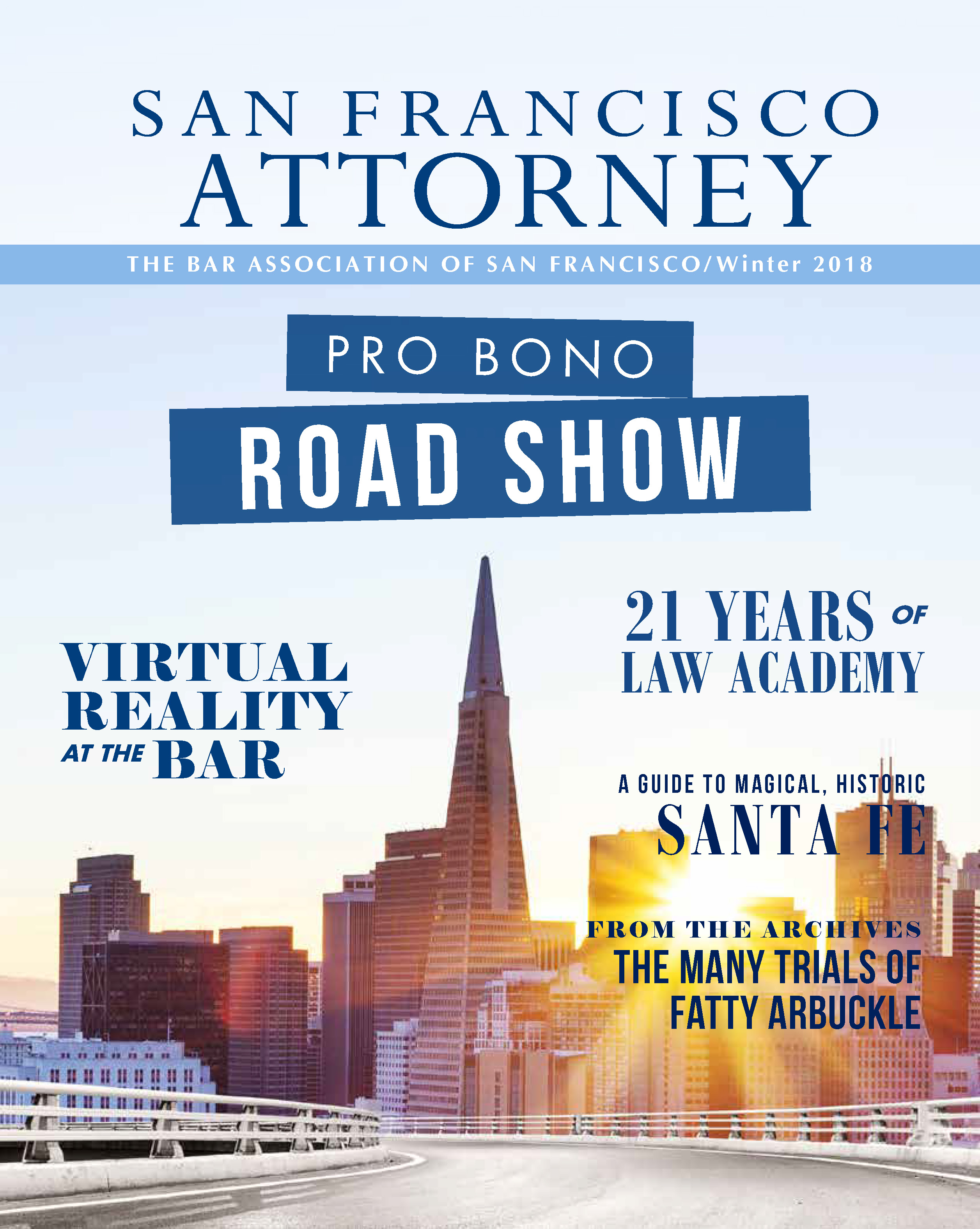
Hundreds cheered when Balboa High School senior Kitty Zeng stepped up to the podium in the Bently Reserve Building’s boisterous banquet hall.
Zeng was nervous. She had never given a speech before, let alone in front of a crowd this large. She looked out cautiously at the legal professionals who had gathered at the Annual Gala of the Justice & Diversity Center (JDC) of the Bar Association of San Francisco on September 27. But having channeled her nerves into hours and hours of practice, she spoke with poise about how the San Francisco Law Academy had changed her life.
The academy—which turned 21 this year—had opened her eyes to the role that lawyers play in making a difference in society, she said. Perhaps more importantly, it changed the way she saw herself.
“Coming from my background, being an attorney always seemed out of reach. Both my parents are immigrants and they’ve never been to college,” she said. “Even though they try to help me in whatever ways they can, there are still many areas that they’re unable to help me in. If I become an Asian American attorney, I will be able to help people, starting with my parents.”
Zeng’s parents couldn’t be there to witness her speech or hear the heaps of congratulations and praise that followed. But Zeng’s cheerleaders with the Bar Association of San Francisco (BASF) were waiting in the wings to offer their support. Or, as JDC Diversity and Pipeline Programs Director Samantha Akwei put it: “making Kitty the shining star that she is.”
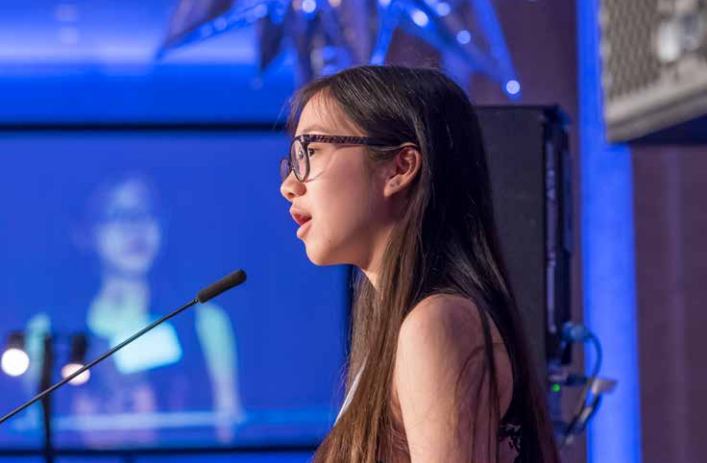
Akwei had coached Zeng on how to find her voice and tell her story. Akwei understands first-hand the importance of providing the kind of outside support that the law academy offers. When she was growing up, her own working-class parents were often too busy to attend her and her five siblings’ extracurricular activities. But with her parents’ encouragement and the outside support of others, Akwei went on to become the first in her family to go to college.
Over the years, the academy program has given Zeng and hundreds of other disadvantaged and minority students opportunities they might otherwise have missed.
“My dream is that Kitty majors in something that interests her,” Akwei said. “She’s had the opportunity to access something other students don’t. Whether she uses it or not, it’s something in her treasure chest.”
About the Program
The law academy program, which began in January 1997, has two main components. During the school year, volunteer attorneys serve as classroom mentors. In the summer, law firms, corporate law departments, nonprofits, and government agencies hire the students for paid fellowships.
The academy gives students an up-close look at a professional world that may be foreign to them. Even though they learn about what it means to be a lawyer and the various career paths available to attorneys, the goal of the program was never to make sure students pursue careers in the law.
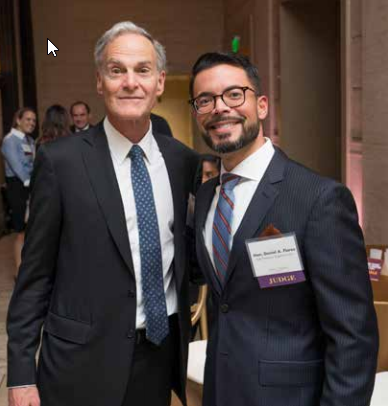
According to San Francisco Superior Court Judge Jeffrey S. Ross, who helped start the program while serving as BASF president, early organizers sought to build self-confidence, develop critical thinking skills, and prepare students for success in whatever endeavor they choose.
The curriculum teaches students how to recognize power structures and debate political issues. It also gives them a glimpse into the role that lawyers play in helping others and changing society through its laws.
Modeled after Biotech Academy
Ross said the law academy idea emerged from then-San Francisco Mayor Willie Brown’s youth summit and was modeled after Berkeley High School’s biotech academy. Ross met with then-Berkeley Mayor Loni Hancock—who was instrumental in establishing the biotech academy—and brought together others at BASF who shared his vision.
One of them, Kathleen Purcell, was instrumental in facilitating the conversations that got the program off the ground because she was trained as both a lawyer and a teacher.
“I feel grateful to be part of it,” said Purcell, a retired partner at Remcho, Johansen, & Purcell who now devotes her time working with youth and communities in need as director of the Lantern Center for Hospitality and Education.
Although there are no stats on how many of the academy’s graduates go on to college or law school, not long ago Ross said he ran into someone who had been inspired to go college and become a lawyer because of the program. It happened at, of all places, an event organized by Hancock, who went on to serve in the state Senate.
“It’s exciting to see. After 20 years we have people who have gone into many different directions,” Ross said.
In the nonprofit world, programs often ebb and flow with volunteer interest. But the law academy has had staying power. Ross and Purcell have both remained active on the advisory committee and recruiting new volunteers. Among those volunteers is Ross’ son, Jonah, a third-year associate at Shearman & Sterling, who serves as a mentor.
That’s not to say the program has not experienced challenges. Early on, when the academy was located at Mission High School, programmatic changes forced the academy to look elsewhere for a host. The advisory committee then established its longstanding partnership with Balboa.
How Employers Can Help
Currently, there’s a need for more employers to host academy students for the summer. Ideally, the employer will be able to expose the students to some real-life lawyering such as sitting in on depositions or going to court, said Michael Rosenberg, the Balboa teacher who has been the law academy’s director since 2004.
Rosenberg has seen students go to law school and make an impact on society by doing public policy work. One former student even started a nonprofit organization. When students from low socio-economic backgrounds need supplies or money for field trips, BASF is there, he said.
“These kids really do end up feeling empowered,” Rosenberg said. “It takes time, it takes work, it takes organization. We’re proud of that work and our relationship with BASF. They are our additional limb.”
The students learn how law and policy changes made in Washington, D.C., affect their own lives. One student recently missed six weeks of school because she had trouble returning from a family visit to Guatemala. Even though she lives in the U.S. legally, she somehow got caught up in the Trump Administration’s border-tightening measures, he said.
Using that and other examples, Rosenberg tries to draw connections for the students between their own experiences and the law. Students have been personally touched by housing law, family law, free speech laws, and the Fourth Amendment right against unlawful search and seizure.
He makes sure they have plenty of opportunities to put what they learned into practice through annual community service projects. Over the years, academy students have helped to improve local parks, get free public transportation for low-income youth, and make changes to school policy.
Benefits for Volunteers
Not only does the academy impart the students with the values of the legal community, but those who participate as lawyer-mentors or employers receive the benefit of connecting to the community’s young people and learning what life is like for public school students.
“It allows our legal community insight into our public education system,” Purcell said.
Steve Berninger, who has served as a mentor for about a decade, said he felt “ancient” at first walking into a high school even though he was only in his mid-thirties at the time. But he soon got over the novelty of having to once again be in the class by the time the bell rings. He has found the program an immensely rewarding way to volunteer.
In one of the exercises, where mentors coach students on how to conduct themselves in a job interview, it’s amazing to watch the students improve in the span of a few weeks, said Berninger, a prosecutor for the Environmental Protection Agency.
While students are often interested to hear about his work, Berninger said his message to them is to find their own passion and not to worry if they haven’t decided what they want to be when they grow up.
Another longtime mentor, Sidley Austin partner Ryan Sandrock, said he wants the students to understand the advantages they have just by being in San Francisco at this moment in history—the height of a great tech boom.
“These opportunities don’t exist in other cities,” he said. “When someone is 16 it’s all out in front of you. You don’t have to narrow your interest at this point.”
For Sandrock, the volunteer experience keeps him connected to his vocation before he became a litigator. He taught American History and Civics at a high school in Louisiana before going to law school at age twenty-five at the University of Chicago.
“The best thing for me is when a student is hitting it out of the park—you just know they’re going to be a huge success,” he said.
About the author:
Laura Ernde is a San Francisco-based communications consultant. She has covered legal affairs for more than a decade, as a journalist and former editor of the California Bar Journal.



